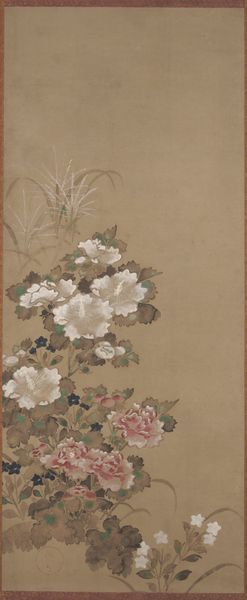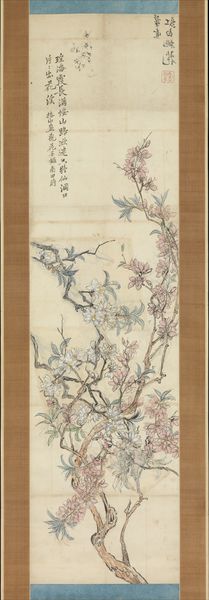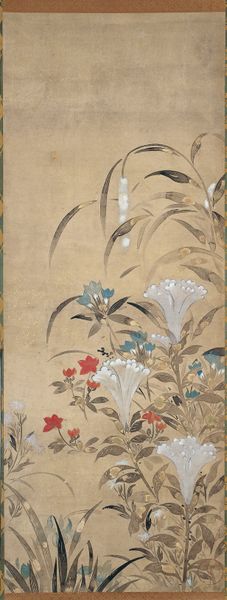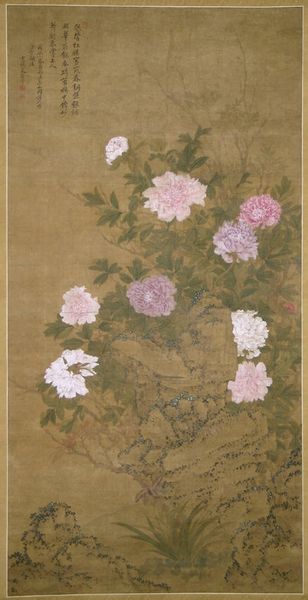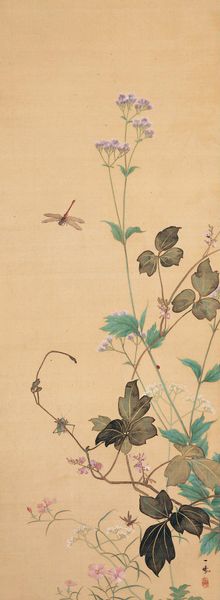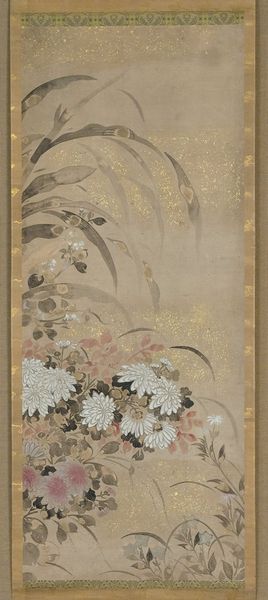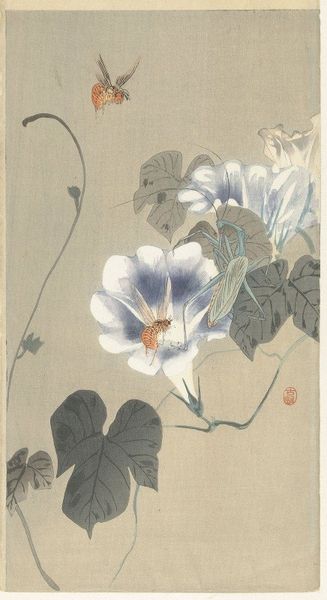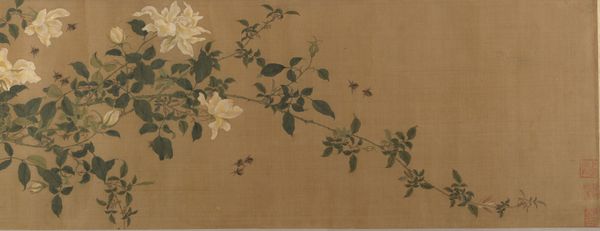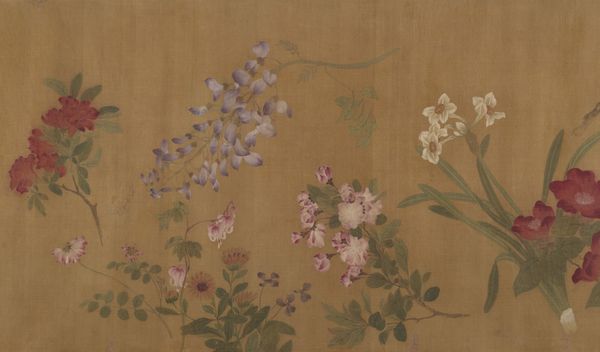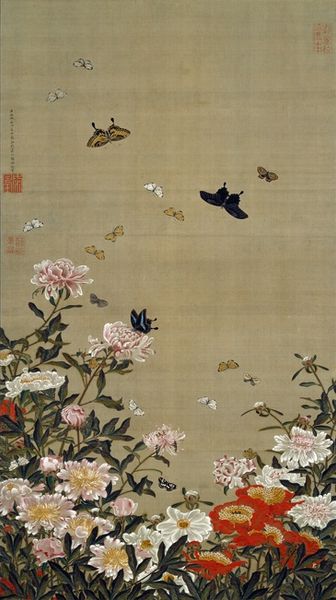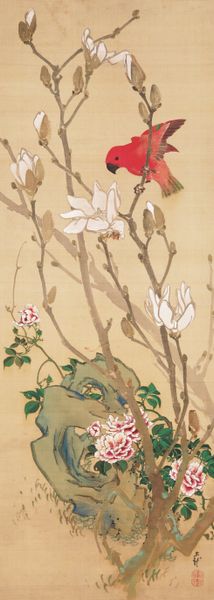![Flowers of Summer [right of a pair of Flowers of Summer and Autumn] by Tawaraya Sōsetsu](/_next/image?url=https%3A%2F%2Fd2w8kbdekdi1gv.cloudfront.net%2FeyJidWNrZXQiOiAiYXJ0ZXJhLWltYWdlcy1idWNrZXQiLCAia2V5IjogImFydHdvcmtzLzlmMzU5YTE3LTU0ZmYtNDYzMi1iNWRlLTE2M2MzNjMzYWRlMy85ZjM1OWExNy01NGZmLTQ2MzItYjVkZS0xNjNjMzYzM2FkZTNfZnVsbC5qcGciLCAiZWRpdHMiOiB7InJlc2l6ZSI6IHsid2lkdGgiOiAxOTIwLCAiaGVpZ2h0IjogMTkyMCwgImZpdCI6ICJpbnNpZGUifX19&w=1920&q=75)
Flowers of Summer [right of a pair of Flowers of Summer and Autumn] c. 17th century
0:00
0:00
tempera, watercolor
#
water colours
#
tempera
#
asian-art
#
japan
#
watercolor
#
line
#
watercolor
Dimensions: 51 5/16 × 19 1/2 in. (130.33 × 49.53 cm) (image)83 7/8 × 21 1/16 in. (213.04 × 53.5 cm) (mount, without roller)
Copyright: Public Domain
Editor: This is Tawaraya Sōsetsu’s “Flowers of Summer,” made around the 17th century. It's a watercolor and tempera piece from Japan, part of a pair with an "Autumn" piece. It feels incredibly delicate and ethereal. What's your interpretation of this artwork? Curator: Well, considering its historical context, such works reflect the flourishing artistic patronage of the merchant class in the Edo period. How might the rising economic power of this class influenced the subject matter, shifting from traditional landscapes to more accessible themes like flowers? Editor: That's a great point. It's interesting to think about how the art market itself might have shaped the choice of flowers as a subject. Were there specific social meanings associated with certain flowers that would appeal to this new audience? Curator: Precisely. Think about how the placement of this artwork, likely in a wealthy merchant's home, functions to display both their wealth and refined aesthetic taste. The choice to pair “Summer” with "Autumn"– how does that contribute to our understanding of seasonal appreciation and, perhaps, even a meditation on the fleeting nature of beauty and life, values prized across classes? Editor: That makes me consider the subtle details I missed, like the different flower types maybe symbolizing particular virtues or values esteemed by that society. And the conscious pairing with autumn. Curator: Exactly. It moves beyond mere representation; it's a deliberate cultural statement. This wasn't simply about pretty flowers, it was about constructing and communicating identity through art patronage. What have you gathered about art and cultural forces at play? Editor: I learned to consider how art styles become popular due to shifts in society. Thanks, that’s a broader view than I considered before. Curator: Likewise, it’s refreshing to discuss how seemingly simple subjects, like flowers, were also tools to show status and influence.
Comments
minneapolisinstituteofart almost 2 years ago
⋮
Colorful wildflowers of summer and autumn abound in this pair of hanging scrolls by an early painter of the Rinpa school, a lineage of painters of the Edo period (1603–1868) that engaged with classical Japanese themes and designs to create a distinctively decorative style of painting. The right scroll is dominated by large white cockscomb, blue gentians and irises, and red azaleas. At left orange lilies, red magnolia, and white clematis bloom beneath the branch of a chestnut tree. Sōsetsu was a follower of Sōtatsu, the leader of the Tawaraya studio now seen as the progenitor of Rinpa-style painting. Sōsetsu also used his master’s large, round seal (read “I’nen”) that can be seen on the lower outside corners of each of the present scrolls.
Join the conversation
Join millions of artists and users on Artera today and experience the ultimate creative platform.
